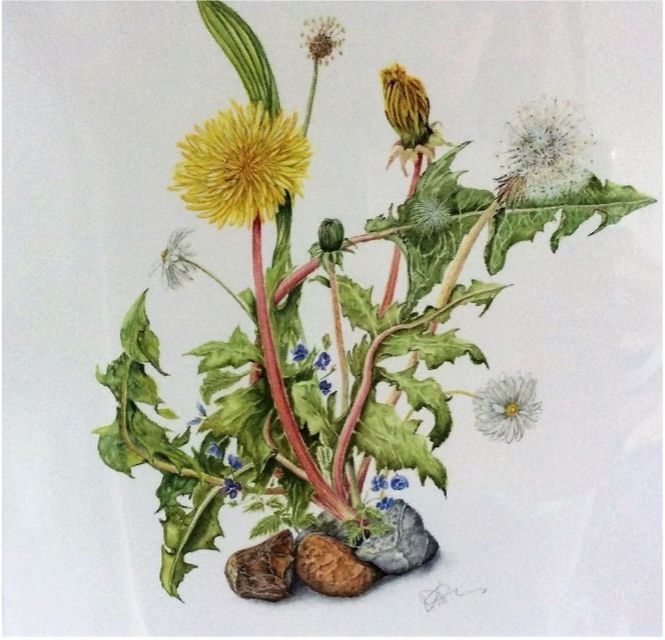My Scottish Wild Garden - Early Winter
by Linda Latham
Estimated reading time 16 mins
Welcome back to my world in my Scottish wild garden space. If you read my first blog, I think it will be of no surprise that writing more about encouraging the wildlife in my garden is a feature and priority for me and, as a wildlife artist, I think you might forgive me for that. They are inseparable.
Trees and hedgerows provide habitats for hundreds of creatures, and their pollinators create the fruits and seeds for the next generations. Birds, mice, etc. assist in the spreading of those seeds and with more of the right species of plants we get more creatures. The ecosystem restores the balance of species and plants evolving to a sustainable level. That is what I believe and experience.
My hope with the space I have, is to restore the traditional manicured garden areas and grazed fields into natural self-sustaining areas of growth providing shelter and food when traditional gardens shut down and wither in the late autumn and winter.
The description of Scottish wild garden may conjure up a picture of remoteness, exposure, rutting deer on the snow-capped mountain side, but this wild garden space is semi-rural and on the edge of a village.
If, however, you change your perspective view to one of a field vole, frog, barn owl insect or small bird, any open expanse of ground is a wilderness. A fearful place with predators lurking ready to eat you, or strange sounds and many creatures competing for your food and territory, and I am not talking about humans. A mole hill is a mountain side to a beetle and a rain storm a tsunami to a worm. We cannot stop the tsunamis of course.
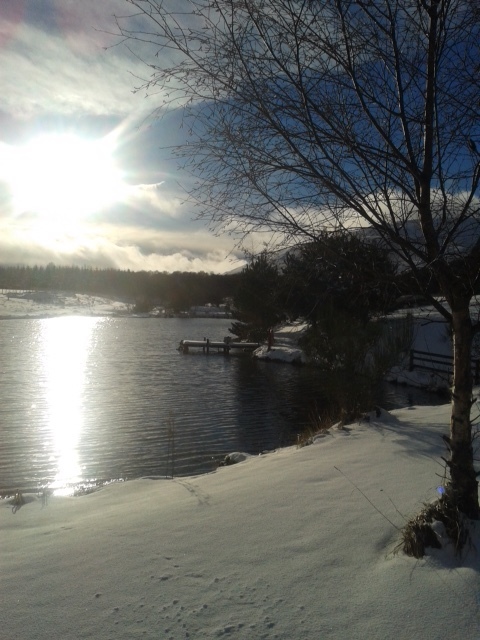
My birds eye view of the world may sound a peculiar or eccentric way of thinking to some, it is my way. I watch the blackbird with his red stained beak enjoying the ripened berries in the Cotoneaster hedgerow, grown with his needs in mind and I feel his enjoyment, full belly, and gratitude. Ducking under the newly built spiderweb across my greenhouse door, I feel his sense of achievement as he spins the sacrificed moth into a tight ball, for his evening meal. I wonder at the intricacy of a decayed leaf with its skeleton intact, having survived many storms, snow, and time.
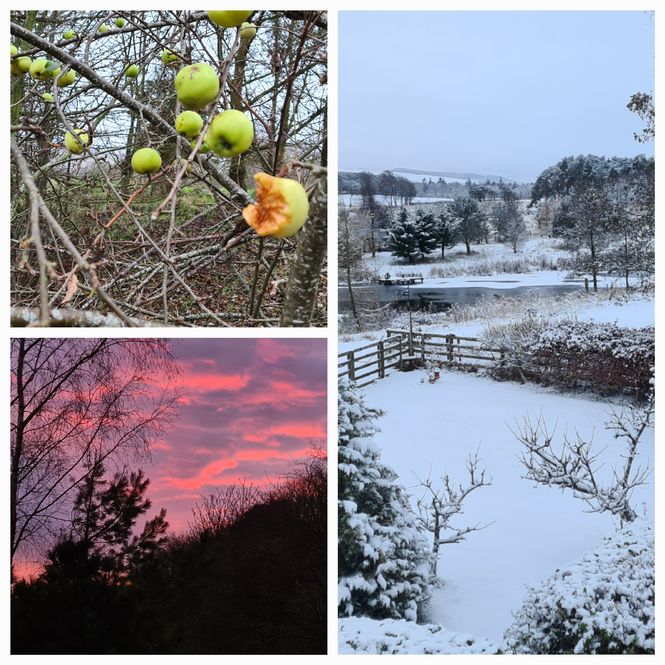
I imagine myself in their place and what I would need to survive and thrive. And it is a very scary unpredictable world if you are as tiny as a robin or goldfinch stalked by a hungry sparrowhawk on the hunt. All these creatures need plants, gardens, interconnected with wild areas and habitats providing safety and shelter. We may not love the slug or snail, but hedgehogs and song thrushes do! I believe these disappearing creatures will not return until we give them the time and space to rebuild their habitat and population.
We have, in our wisdom, amassed seed banks all over the world to protect our plant species and food sources, but we do not, yet, have the ability to reverse the extinction of the many species of wildlife lost, including pollinators. And our clean air, oxygen rich water and fertile earth is vital for those plants to grow. A sobering thought!
I do spend hours observing and listening in the wild garden. Patience rewards you, in the quietness, with a glimpse of a scuttering weasel through the undergrowth. Or a shrew caching some discarded crumbs from the bird feeders, reminding me that what we actually see, is probably only a tiny fraction of all the busy comings and goings occurring around us as we trim the hedges or dead head those ever-flowering Cosmos. And below the ground…the microscopic, composting world, recycling, reproducing, spreading, breathing and connecting. The world wide web of the natural ecology of our planet…in our own back gardens! How magnificent is that?


All this busy secret life, for me, completes the visual composition and turns the picture-perfect garden canvas we try to create into a living three-dimensional experience. Full of sounds, movement, excitement, and life. Yes, we may lose some plants munched by the “unwanted”. But when that well fed caterpillar transforms and lands on your tee shirt as a beautiful butterfly, I care not for the lost leaf. Both have evolved that way, and who am I to interfere?
My early winter tasks
Daily, I top up bird feeders and water trays around the garden. These are positioned for maximum cover for wild birds, remembering that once the leaf canopy has gone, they may need relocating somewhere under or nearby evergreen trees etc. These evergreen trees and hedgerows were planted many years ago, just for this purpose, along with many deciduous varieties, Alders, Hazel, Rowan, Oak, Beech, Maple, Willow, Ash and Birch. I have found that spreading out feeding stations, depending on how many birds visit your garden, helps many birds. Different species feed on sunflower seeds, meal worms, peanuts, mixed bird food, fat balls etc. At present the Goldfinches are dominating the feeders, with ground feeding birds tidying up their fallen crumbs. Nuthatch and Woodpeckers and Great tits love the peanut and fat balls, and competition for all the food can cause battles. Spreading them out creates harmony and confuses the sparrowhawk as there are more ‘watchers’ to call out the imminent danger alarm.
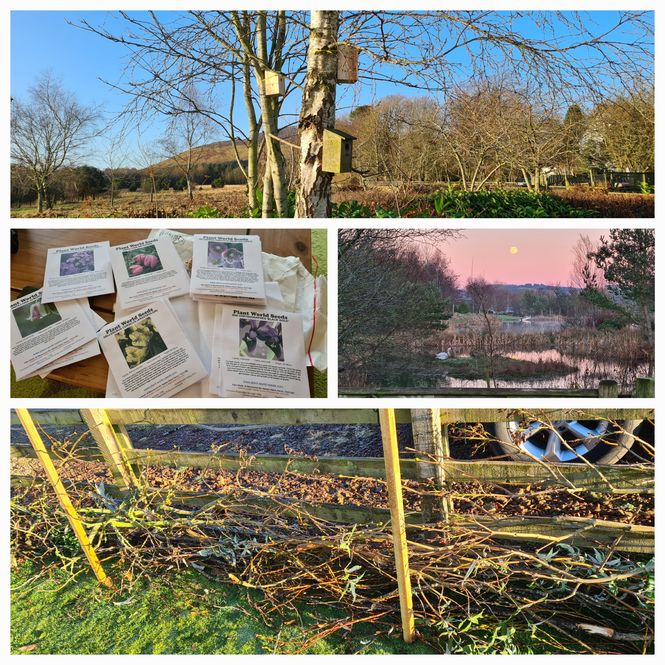
We have two Barn Owl boxes adjacent to the open meadows and have seen them nesting and rearing chicks in the past. It is a great sight at dusk on a windless evening to see them hunting across the open ground. This picture was taken in late May one year of a chick waiting for its parent to return or checking out the terrain. I do daily checks of my cuttings and propagating seeds that now take up all available space in my unheated greenhouse. And, after the morning cuppa there, wrapped up in layers of thermals, I turn my attention to more twiggy things. With less daylight, warmth, and sunshine, you will find me collecting fallen twigs and branches that have succumbed to the high winds or storms. I use them in several ways:
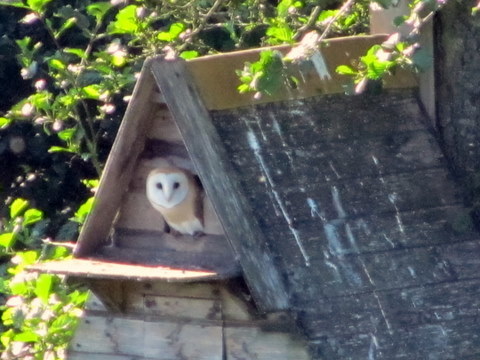
I create a natural barrier by laying and intertwining them against a boring fence. When stacked together as high as you can manage the covered corridor benefits small birds, frogs etc., in a safe habitat. Support the unfenced side with a few stakes and you have a hedgerow which needs no maintenance. Plant a Clematis or two beforehand and it will meander through its supported tangle. As a twiggy barrier is also can deter rabbits from sneaking through. (I don’t like rabbit wire).
Piled up in loose mounds under trees, providing shelter for wrens, hedgehogs, ducks, voles etc.
Great way to recycle.
Other people’s cast offs
Overtime I have managed to collect the plants other gardeners reject as weeds, or the unwanted, unplanned for etc. I love them all because they are survivors, they have a purpose for some wildlife or benefit the soil and as much as we belong, so do they. And because I have the space it is my duty to give them some too. I am convinced that all pollinators agree with me along with the birds that feed on their seed heads. Last summer I observed young Siskins pecking at the daisy heads in the lawn for the pollen. It was just lovely to watch and made me glad I had not cut the grass. Another example of a birds’ eye view of life! There is still so much to do, and I sometimes wish I had an army of people to help, but anything I can achieve for the wild garden is a bonus for me.
Gone but not forgotten
The flag irises, marsh marigolds, bullrushes, meadowsweet, tall grasses and other marginal plants are now dormant having provided their nectar for the bees, butterflies, dragonflies and damselflies that buzzed around the edges of the water in summer, but their wispy skeletal forms remain, strewn with frosty spiders’ webs hanging like white net curtains, glistening in the low light of a winter’s day.
I leave their brittle forms, used as tiny homes for larvae, and insects seeing out the cold until the time is right to emerge into the wild garden. The resident herons sneak around the cover too, looking for the odd frog or fish at the water’s edge.
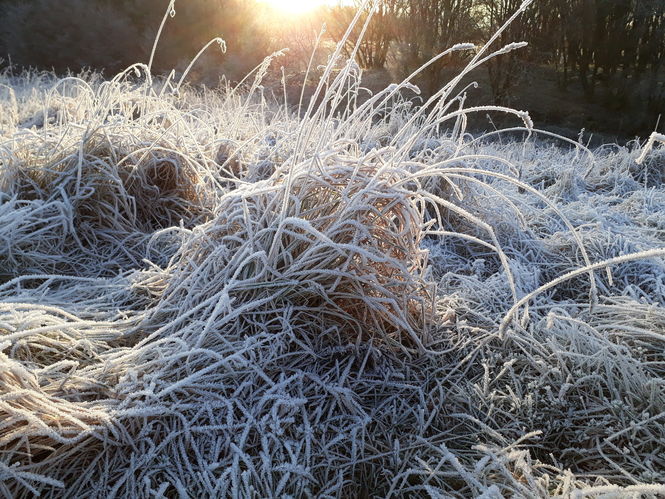
Without the mud the lotus flower cannot grow
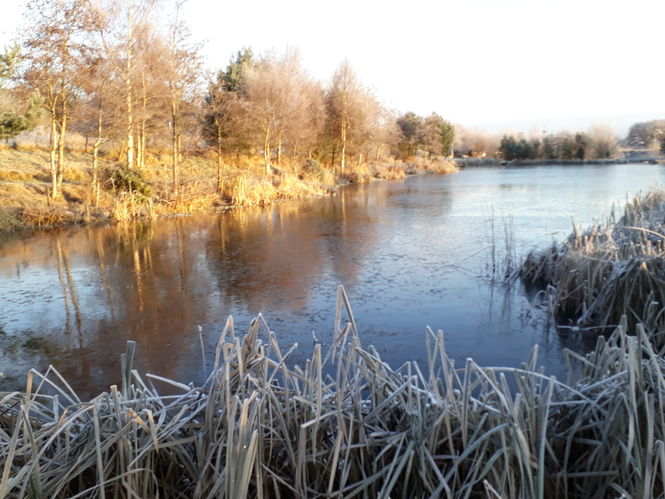
All nesting boxes have been checked for beasties and are left in place, as some birds use them for shelter in bad weather, or during cold nights.
The meadow grass has shrunk back into the ground by now. From four to five feet tall in summer, it almost crumbles into nothing at this time of year. In spring, an azure blue carpet of speedwell forms large patches before the tall growth reappears. Such a tiny flower, but one of my favourites.
At the time of writing (early November) I have English laurel flowering, grape hyacinths and daffodils showing through. delphiniums a foot tall, cornflowers, daisies, fuchsias, red campion and hellebores still in flower. I am not sure why, or if it is a good thing in nature. And no doubt the first below zero temperature will send any new growth retreating underground. What I do know is we need to keep observing and adapting. Various studies, over many decades of observation and recording indicate many changes to our environment, hopefully making us more aware of our influence on the natural world. In my view, every considered step we make to nurture our threatened wildlife back, harmoniously, helps everyone in so many ways. That patch of neglected muddy earth we leave in the corner of the garden for wildlife to develop reaps rewards. Without the mud the Lotus flower cannot grow.
Tidying up
I am a very tidy person, and it does go against the grain to leave things where they lie or die. The urge to sweep up and make it look ‘pretty’ is ever present. But outside I become a different animal. None of the living things in my wild garden care about being ‘pretty’. Their main priorities are getting through the next day and by disturbing their shelter, or territory, or food source I put that survival at risk. As gardeners we pull out annuals or cut back perennials, dig out overgrown plants etc. We don’t want to live in a jungle. However, we can leave those cuttings to rest on the soil for a while before they are disposed of, to allow creatures to disperse and find nearby homes. And if they die, they will at least return to the soil as valuable nutrients, rather than expire in a plastic bag. And maybe if we leave untouched those crusty stems or wilted roses for a while, they might surprise you with their stark beauty on a frosty winter’s day when all else has disappeared!
A botanical collection of fallen autumn bounty
And my final thoughts at this festive time of the year is to be creative with the natural materials around my garden.

Bendy twigs of willow or hazel can make wreaths or arrangements for indoors. Of course, holly, if you have it, but laurel, fir, pinecones, acorns - we all know are useful too. Even autumn leaves if dried out will last for many months indoors as decoration. I have a twig of maple leaves which has been a coppery splash of colour for some time now in my studio. Last year I re-purposed the remaining crab apples from the garden by threading through with twine and hanging them like baubles on my small trees near the house. The birds eventually pecked their way through them by Hogmanay, along with homemade fat balls.
Next time: late December – January
Having enthusiastically waved goodbye to the ‘shortest day’, my wild garden will have already begun to search for the growing daylight towards spring. From snowdrops, daffodils, hellebores to early shoots peeping under the blanket of fallen leaves. My mood lifts dramatically after this milestone of the calendar, as every day forward is full of possibilities.
About the author
Linda Latham
I am 70 years old, was 51 when I started this journey into the wild garden. On the whole I manage the 12 acres myself, with my partner driving tractors or other machinery now and again. It is a joy. Am I retired? Retired from paid work, yes. When time allows, I am a wild life and botanical artist.
All photographs © Linda Latham
Did you enjoy reading it? Check out Linda’s other blog on autumn tasks in a wildlife garden.
